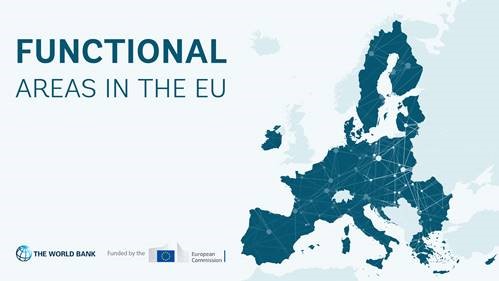Urban-rural linkages
The EU is working together with countries, regions and other partners to promote urban-rural linkages.
-
 Cohesion policy 2021-2027 continues supporting integrated territorial and local development strategies, and empowering urban authorities and territorial bodies in addressing local challenges while requiring strong local partnerships with relevant stakeholders.
Cohesion policy 2021-2027 continues supporting integrated territorial and local development strategies, and empowering urban authorities and territorial bodies in addressing local challenges while requiring strong local partnerships with relevant stakeholders.
The urban dimension has been strengthened, with at least 8% of the European Regional Development Fund (ERDF) dedicated to sustainable urban development strategies. In this context in particular, the Commission encourages Member States to have a stronger focus on urban-rural linkages, including functional urban areas, in their programmes to better respond to the needs and potentials of territories that may not be defined within one administrative boundary only.
A truly integrated approach to development must go beyond intra-city policy coordination and traditional rural issues. Planning and putting plans into practice with surrounding areas, both urban and rural, needs to be considered. The benefits of stronger urban-rural cooperation include e.g. more sustainable land use and planning, better services (public transport, health, education, etc.) and better management of natural resources.
The EU cohesion policy promotes functional area approaches, in particular through its new policy objective `Europe closer to citizens` and the various tools offered for integrated territorial development, including for sustainable urban development, and for supporting disadvantaged areas.
The concept of functional areas is at the heart of cohesion policy territorial development as well as territorial cooperation as it makes it clear that policies cannot be designed separately by each side of the border but jointly on the joint territory that people share in their daily lives.
Moreover, cities and other territories in the EU are looking for new and innovative approaches to achieve just,
green and digital transition, while having limited financial resources. Well-coordinated functional areas can help in all this, as they can achieve
higher productivity, ensure more efficient use of resources and better access to quality public services.
Functional areas pilot project within EU cohesion policy
Recognising that functional area approach that exceeds administrative boundaries requires careful preparation and adequate administrative capacity, the Commission has initiated a project to provide technical support in selected functional areas to enhance cohesion policy implementation.
- More information on the project website: Functional Areas in the EU – Crossing administrative boundaries for green transition and sustainable development
Studies
RURBAN is supporting the production of two studies:
Further information
- Urban development
- Rural development
- Community-led Local Development
- Guidance Fiche: Integrated Territorial Investment (ITI)
- Maps
- New Leipzig Charter - The transformative power of cities for the common good
- Pilot project: functional areas in the EU
- How to make citizens active participants in the governance of EU cohesion policy
